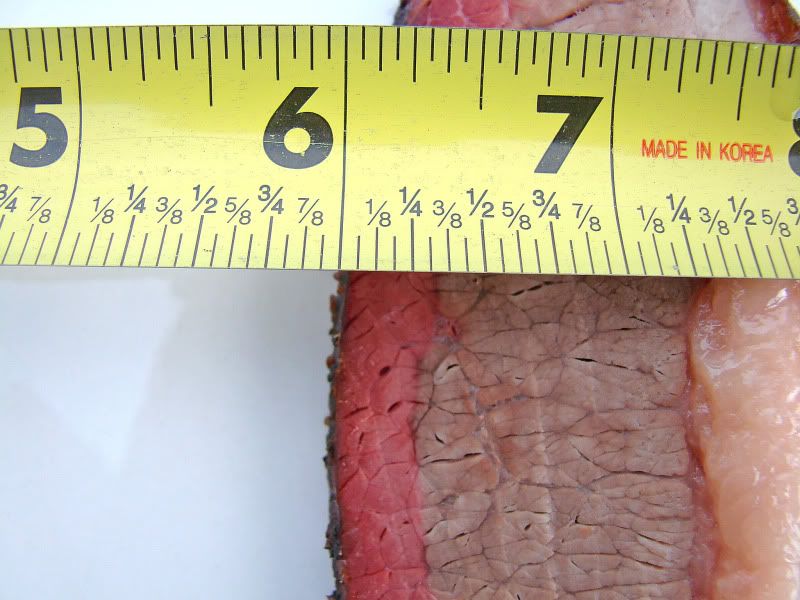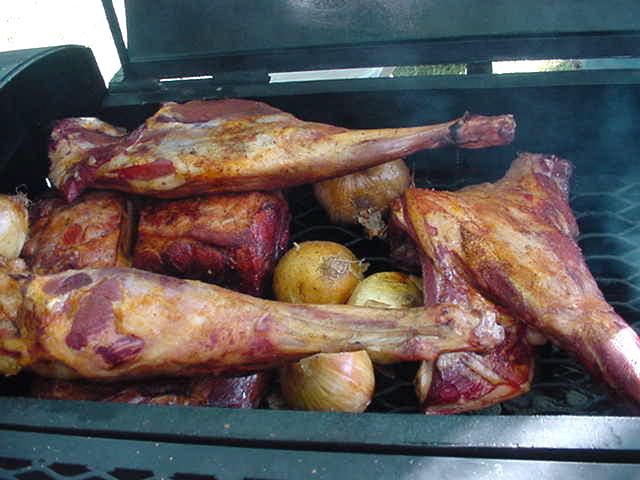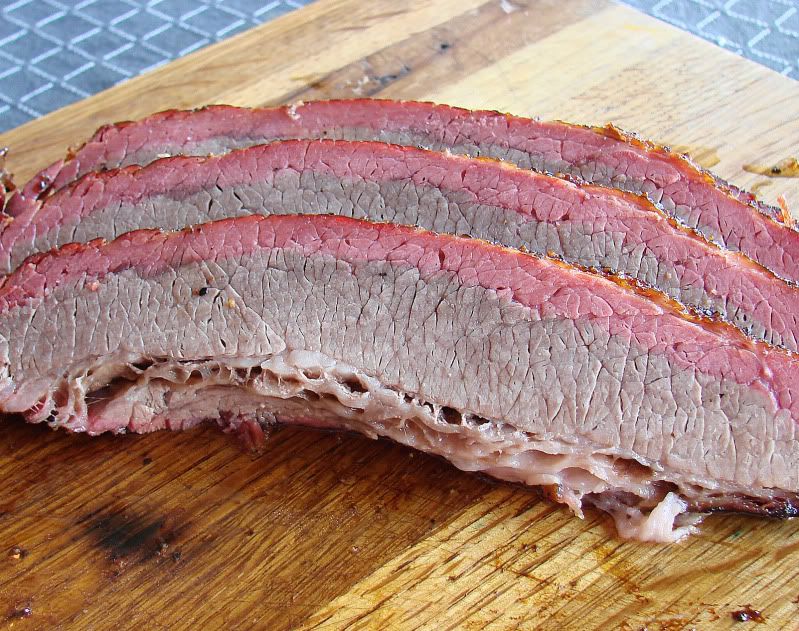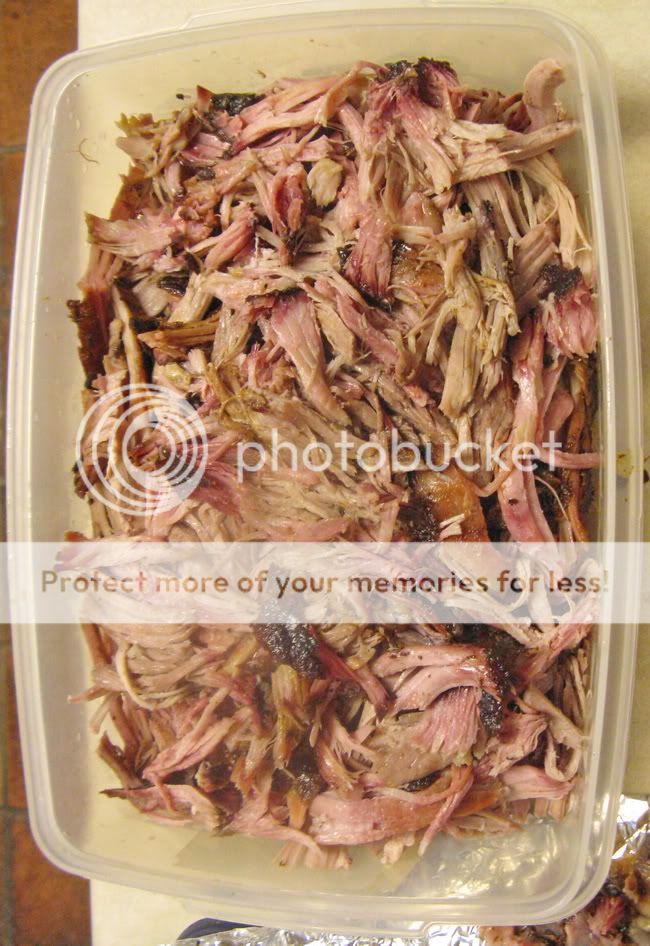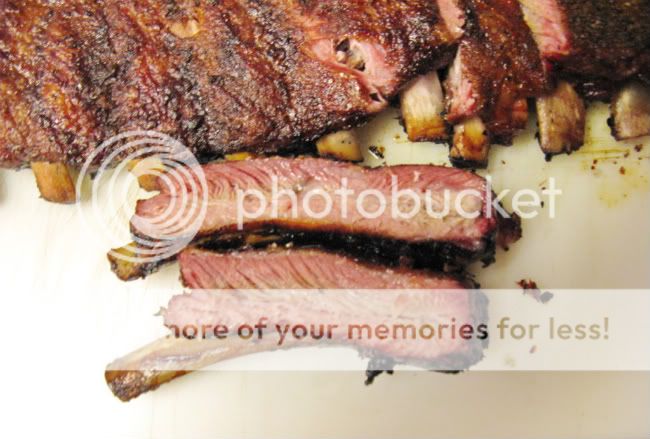Here some tips for a better ring....
* Smoke rings stop forming at 140°, so start your meat off cold, and run your pit colder for the first couple of hours. Remember that the ring formation stops around 140°, you can keep piling on the smoke flavor as long as you have smoke. (In fact you can make meat so smokey you won't want to eat it).
* Flaming wood produces more nitrogen than a smoldering fire. Use correct vent settings on your cooker, and maintain good airflow in your firebox, charcoal basket etc.
* Moist meat absorbs nitrogen dioxide more easily. Use a water pan in your cooker, use a ceramic cooker (they keep meats moister than many steel pits), marinate, inject baste, or spritz your meat, or use some immature wood. Don't use all green wood, just a piece or two that is not fully cured. Soak a few chips or a chunk or two, don't soak them all or your smoke production will be limited until the wood dries out. Try putting a whole onion or two on the grate, they release moisture curing the cook and are delicious. Look close in this picture and you will see 6 or 8 onions amongst the meat, there is also a coffee can half-full of water in the other end.
* Charcoal briquettes have more nitrogen than lump charcoal. If you are a lump burner add a couple of briquettes atop your fire early on in the cook. If you are using a box style electric or propane smoker, add a briquette or two to your chip pan. Below is the list of things found in Kingsford briquettes:
Kingsford sends a form letter in response to consumers' questions about the ingredients. According to the form letter sent in August, 2000, Kingsford contains the following ingredients:
wood char (for heat)
mineral char (for heat)
mineral carbon (for heat)
limestone (for color)
starch (binder)
borax (to release from the mold)
sodium nitrate (added to help ignition)
sawdust (to speed up ignition)
* Cook larger cuts of meat and/or keep your cooker full.... More meat means more mass, more mass will retain more moisture. Select whole briskets over flats, cook two butts instead of one, don't just cook 3 thighs, buy a big pack and fill up that grate. If you have some spare room on a grate, put a fatty or two on.
* Celery Juice - Celery Seed & Celery Salt - Celery juice concentrate is a vegetable product, but has a significant amount of naturally occurring nitrate. Celery juice has very little pigment and a mild taste that does not detract from the meat's flavor. Furthermore, celery juice, celery seed, celery powder or celery salt may be listed as natural flavoring on meat product labels. Some producers sneak celery products into certain meats, sausages, bacon etc., then label it "No Nitrates Added" or "Uncured". Sneaky isn't it? It's no secret that celery seed and celery salt are popular ingredients in rubs, especially beef rubs, but we like them for flavor. I put a layer of grounnd celery seed on all my briskets. Now if you don't like eating things with nitrates in them, don't give up on celery sticks. Although there are still nitrates present, your body reacts differently to natural vs. synthetic nitrates. For example, celery salt also contains high levels of antioxidants, which help your body process the nitrates.
* Use some Tenderquick. All you do is sprinkle some on the inside face of a brisket (the side opposite the fat cap) and let it sit for 10 minutes. Rinse it off, then return the brisket to the fridge for at least 1 hour, you can let it rest in the fridge up to 8 hours. Then season and barbecue as usual. There is no additional salt flavor from the TQ, and you will not "cure" the surface of the meat. This is a TQ'd brisket.

